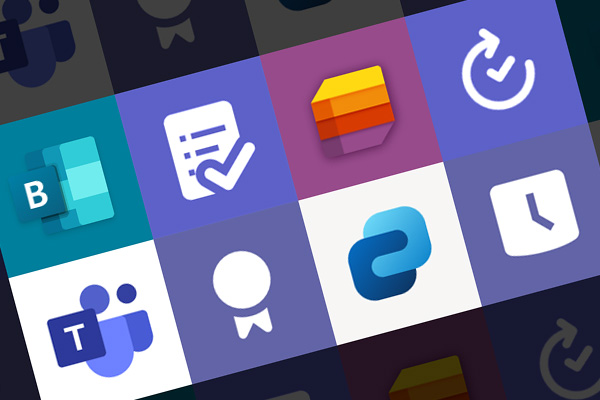
Over the past three years the growth in adoption of Microsoft Teams has been remarkable. From what originally seemed designed to be a rival to Slack, Teams has gone from strength to strength and is now at the centre of the plans of many digital workplace teams.
When digital workplace teams launch Microsoft Teams through an organisation, it usually replaces a myriad of local collaboration and communication tools and applications that are used within different divisions, department and locations.
Having one enterprise-wide platform drives efficiency, reduces costs, opens up opportunities to introduce further capabilities and ensures everyone can communicate with each other. But old habits die hard and it’s not unusual for some parts of the business to keep on using a different tool. In particular, Slack is frequently used by IT and technology functions as their communication platform of choice.
While Slack can co-exist happily with Teams, it’s less than ideal, and often digital workplace teams find themselves having to plan an additional migration of Slack from Teams. In this post we’re going to explore some of the things you need to think about in planning a Slack to Teams migration.
What is Slack?
Slack is a messaging, communication and collaboration platform that is currently owned by Salesforce. It was launched back in 2013 and has considerable overlap with Teams functionality, including workspaces, discussions in different channels, instant messaging, video calls, document sharing, integrations and more.
In its earlier days, Slack was one of the solutions that seemed to act as a catalyst for Microsoft to develop Microsoft Teams. Although it is still a very popular solution – particularly in technology companies – many suggest that Slack is not as popular as it used to be, as solutions like Teams have taken market share.

Planning a migration from Slack to Microsoft Teams
If you’re planning a Slack to Teams migration project, there are a number of elements to consider.
1. Check out your licensing
Slack is available as a freemium model, but also has licenses in different pricing bands. The licensing arrangements you have with Slack and Teams is an important starting point for planning any migration. While you will need to have any necessary Teams licensing in place, the flexibility that you have when to end your Slack licensing may dictate the timing of your transition.
We’d suggest that its usually important to have sufficient overlap when both Teams and Slack are available to help employees get used to the change, refer to any important content, carry out any regulatory requirements and so on.
If you’re paying for Slack on a monthly basis, this usually provides you with more flexibility around the timing. Note that it is quite possible you have more than one instance of Slack operating through your business.
2. Plan for adoption and change management
From the outset it’s important to view your migration project as being primarily about people rather then technology. Migrating from Slack to Teams is about employees changing their behaviours and you need to consider your approach to change management and adoption, covering the period leading up to the change, the actual launch and then beyond.
At Content Formula we use the ADKAR model which is a comprehensive and popular change management model that helps to capture both hearts and minds, and really embeds behavioural change. Inevitably your change management efforts will need to take in more than just writing a few change communications, and will involve training, support and change champions.
3. Establish your timetable and work with local business leaders
There are multiple aspects that will dictate the timing and approach for your migration, including licensing arrangements, resourcing, change management plans and any other initiatives that are going on at the time.
If you are migrating a particular group within the business then it’s important to consider their needs and get input and buy-in from leaders within that group, who should agree to your approach and timetable. Not only will they be essential for your change management but they may also advise in the timing – planning a migration of a sales function at the peak season of an annual sales cycle would not be optimal, for example…
4. Map your workspaces and channels
Like Teams, Slack has different channels on different themes, which people will be a member of. In the enterprise product there also fully-fledged workspaces with multiple channels within each. In Teams it’s very likely you’ll want to have an approximation of the different channels and reproduce these.
Depending on how it is used and who the members are, an existing Slack workspace may equate to a whole new Teams space, and a Slack channel may equate to to a channel within a Teams space. However, it is also possible that a channel might work better as a whole new Teams space in its own right. There is no right or wrong approach, but for example if an IT function is using Slack and has seven different channels, it might that in Teams there is a new IT function Teams space that repeats the same seven different channels. However, it might be that a channel might be served by an existing Teams that has already been set up.
While you want to try and map your Slack workspaces and channels to Teams and channels to map continuity, your migration is also a great opportunity to streamline and optimise channels. If you have six Slack channels that didn’t really get used, then you may not want to recreate these within Teams. Again, the best approach is to carry out an audit of the workspaces and channels that are being used and then work with local stakeholders to plan how these will look in Teams.
5. Map your documents
Like Teams, Slack may also have some key documents that need to be referred to, some of which will be part of an existing channel. Again, these may need to be taken over into the new environment. This should be reasonably straightforward and can be even be automated if required, although an approach which assesses their value before posting into Teams will help to optimise your migration.
6. Work out if you need any technical migration
A key decision point in your migration from Slack to Teams is to decide whether you need to carry out a technical migration of any previous conversations or documents. The elements that will influence decision are business value, compliance, cost and the ease of carrying it out. For example, do people need to refer to old Slack conversations? Do employees need access to these for compliance purposes?
There are different options for a technical migration, including working with a partner like Content Formula. There are also different export tools available – both paid-for, but also community-driven and available on GitHub, although these always come with a risk. Microsoft Learn has a handy article about migrating from Slack to Teams that lists some of the options, as well a thes in and outs of migrating apps, channels, direct messages, users and workspaces. Generally, it is certainly possible to migrate channel discussions and documents, but there are some dependencies relating to GDPR around migrating direct messages, for example…
7. Work out what you need to keep from a compliance angle
A critical element in offboarding Slack is what data and records you need to keep from a compliance angle. This might not necessarily mean that users have to be able to access previous conversations within Teams l you may just need be carrying out an export of the data for compliance reasons. The article from Microsoft already mentioned contains some information about exports, but again you may need to involve a partner or discuss options with your contact at Slack.
8. Consider any apps and integrations
Like Teams, Slack also has plenty of apps and integrations, available out of the box but also which may be custom made. For some functions, these integrations may have real value; for example, for IT departments an integration with Jira may be essential for relevant discussions.
If functions are particularly dependent on an integration, recreating this within Teams either using existing connectors or creating a custom integration will add value and support adoption. At Content Formula we often help businesses get the best out of Microsoft Teams with specific integrations.
Need advice? Get in touch.
Migrating from Slack to Teams is not always easy and can be a bumpy ride, but with the right planning and approaches it can be highly successful. If you need help planning your Slack to Teams migration, then get in touch!

Find out more about our Microsoft 365 and development services...
Request a call back with one of our Microsoft certified developers, for a free consultation about your business.




